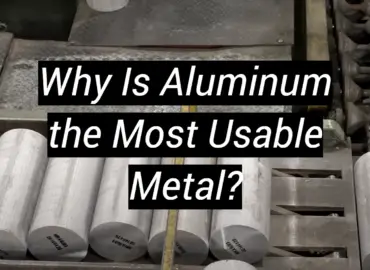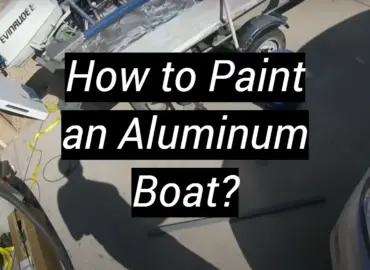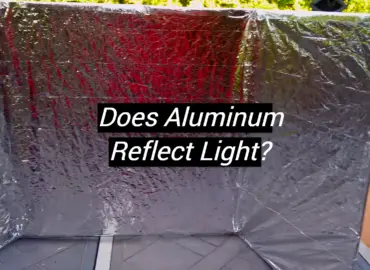If you have ever needed to clean an aluminum surface, then you may have asked yourself the question: will muriatic acid effectively do the job? As one of the most powerful types of acid that can be used in cleaning, many people wonder if it is truly safe and effective for use on metal surfaces like aluminum. With this blog post, we want to explore all the facts and benefits surrounding using muriatic acid for cleaning aluminum surfaces – so read on to find out more!
How Does Muriatic Acid Work in Cleaning?
Muriatic acid is a powerful cleaning agent that can be used to remove rust, lime scale, and other tough stains. It works by breaking down the chemical bonds of these materials, dissolving them into their component elements so they can be easily rinsed away. Muriatic acid should only be used on non-porous surfaces as it can corrode some types of materials like metals. It’s very important to respect its power and use it in a controlled manner with the proper safety precautions such as wearing rubber gloves and eye protection. This will help ensure your safety while you are using this potent chemical.
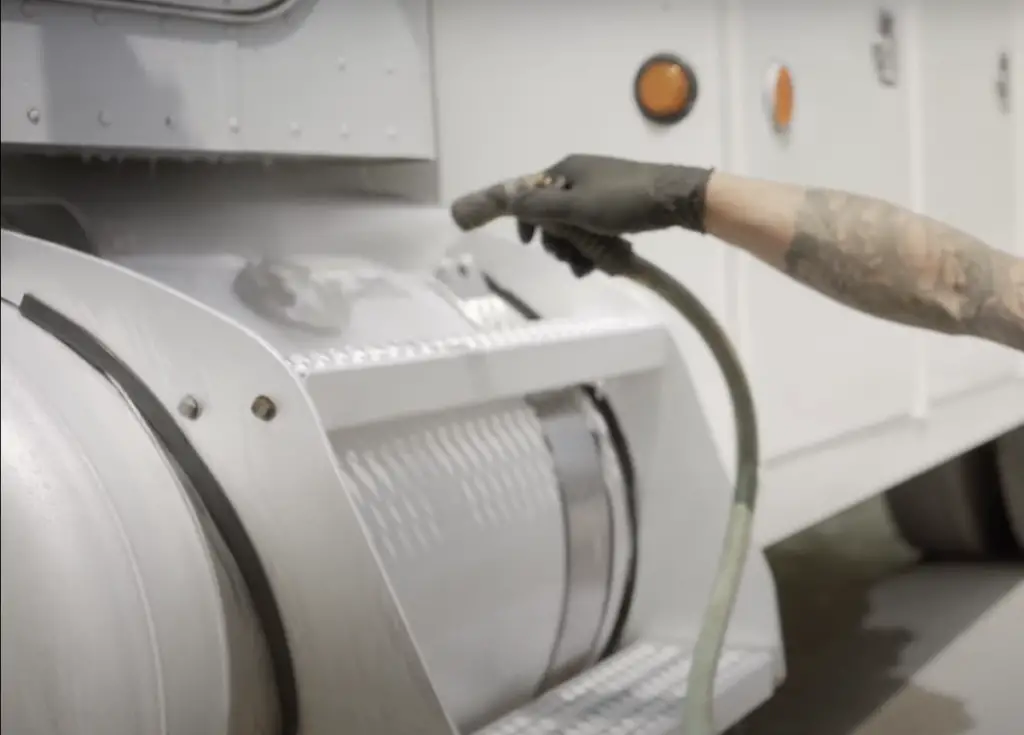
Just start by diluting it in a bucket of water. The mixture should be about 1 part acid to 10 parts water, and then the area you are cleaning should be soaked in the solution. You can also spray a light mist onto the surface.
After the surface is clean, rinse thoroughly with plenty of fresh water until all traces of muriatic acid have been removed.Muriatic acid is an effective way to remove difficult stains and build up from certain surfaces, however it’s important to use caution when handling this powerful chemical. Always wear protective gear and make sure you properly dilute it before use. Also, be sure to rinse the area thoroughly after using the solution to avoid potential damage and corrosion. With these tips in mind, you can easily and safely use muriatic acid for a variety of cleaning purposes. [1]
What Are the Ways to Clean Aluminum?
Aluminum is a versatile and durable material used in many different applications, but it can accumulate dirt, dust, stains and other debris over time. Cleaning aluminum correctly will not only keep it looking its best but also help to prevent corrosion and other damage. Here are some of the most common ways to clean aluminum:
- Wiping with Soap and Water – For light cleaning, a simple solution of soap and warm water can be used to remove any dirt or residue from the surface of the aluminum. A soft cloth should be used for wiping so as not to scratch the finish. Be sure to rinse off any excess soap afterwards for a thorough clean.
- Baking Soda Paste – For tougher dirt and stains, a baking soda paste can be used. Mix some baking soda with a small amount of water to form a paste and apply it to the aluminum surface. Use a soft cloth or brush to rub the paste in gentle circular motions before rinsing off the residue completely.
- Vinegar and Baking Soda – Another effective method is to mix white vinegar and baking soda together, and then apply this paste to the aluminum surface. Leave it on for around 10 minutes before wiping it away with a damp cloth or sponge. Be sure to rinse off any excess residue afterwards for best results. [2]
- Commercial Cleaners – There are also commercial cleaners designed specifically for cleaning aluminum surfaces that can be purchased at most hardware stores. These products often come with directions for use, so be sure to read them carefully before using the cleaner and follow all safety instructions.
- Aluminum Cleaning Solutions – For stubborn stains and dirt, there are also specialized aluminum cleaning solutions available. These products often contain strong chemicals that should be handled with caution. Be sure to read all directions carefully before use and follow all safety instructions for best results.
- Household Bleach – For tough stains, you can also use a solution of household bleach and water to clean aluminum surfaces. Mix one part bleach with three parts water in a spray bottle and apply it to the surface. Leave it on for up to 30 minutes before rinsing off with clear water. [3]
Is Muriatic Acid Safe for Aluminum?
You must understand, it is a strong form of hydrochloric acid, which should be handled with extreme caution. It can corrode aluminum and other metals if not used properly. However, when used in the right concentrations and with proper safety precautions, muriatic acid can actually be an effective cleaner for aluminum surfaces.
Dilute acid with water to reduce its strength and then wipe away any residue left behind after use. Wearing gloves and eye protection are also essential when working with muriatic acid.
In general, acid should only be used in very small amounts and for short periods of time on aluminum surfaces. If you have any doubts, it’s best to contact a professional cleaner who has experience with this type of acid. [4]
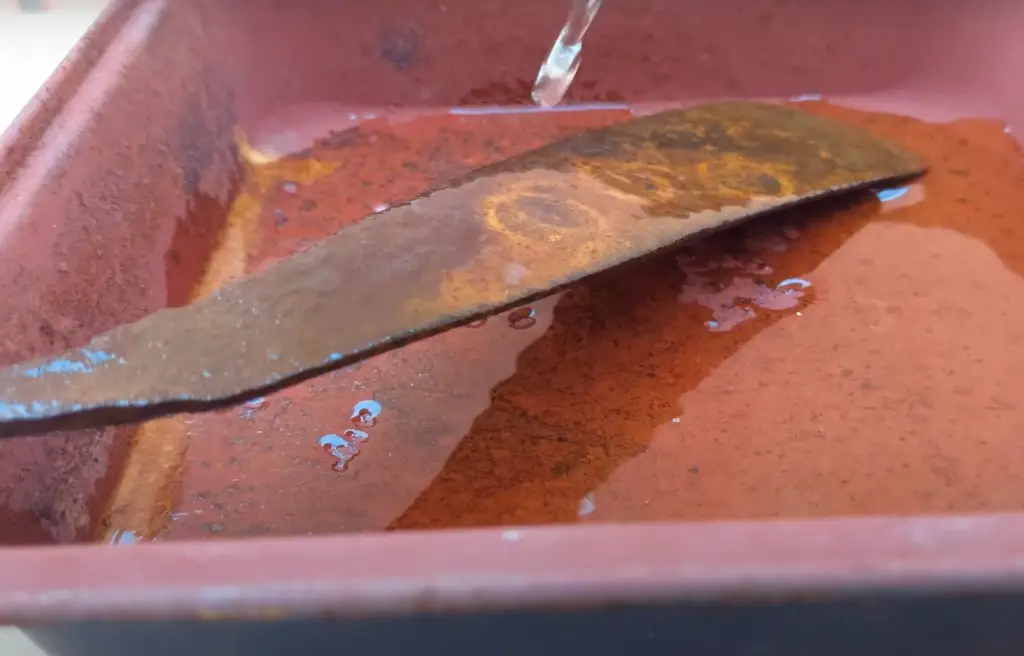
It’s also important to note that acid is not suitable for anodized aluminum because the anodizing process creates a film that can break down when exposed to high concentrations of acids. Additionally, the fumes from muriatic acid can cause damage to plants and animals if inhaled or ingested, so make sure to always use it outdoors or in a well-ventilated area
Does Muriatic Acid Etch Aluminum?
Hydrochloric acid can be used to etch aluminum surfaces in certain cases. It works by reacting with the surface of the metal and creating an oxide layer that is much rougher than the original surface. This makes it easier for paints and adhesives to adhere to the metal.
However, there are some risks for aluminum etching due to its corrosive properties. Before attempting any projects involving muriatic acid and aluminum, it is important to do proper research and understand all safety precautions necessary for such a process. Additionally, in many cases other materials may be better suited for etching aluminum than muriatic acid, especially when dealing with more delicate metals like aluminum alloys. [5]
What Acid is Safe for Aluminum?
The most important consideration when looking for an acid that is safe for aluminum is its compatibility with the metal. Certain acids can cause corrosion and damage to aluminum, so it’s best to do your research before using a particular acid on aluminum.
Strong inorganic acids such as hydrochloric, sulfuric or phosphoric should be avoided because they can corrode the surface of the metal. However, if these powerful acids must be used, then it is essential to ensure they’re properly diluted with water and that all surfaces are thoroughly rinsed afterwards.
In addition, it is important to note that aluminum is often combined with other metals in alloys. If this is the case, then it may be necessary to consult a corrosion chart to determine which acids are compatible for use on particular alloys. Depending on the specific combination of metals in an alloy, certain acids may corrode or damage one metal while leaving another unscathed. Therefore, you must always know what type of aluminum you’re dealing with before using any kind of acid on it. [6]
It is important to avoid mixing different types of acid together, as doing so can result in harmful reactions that may cause harm to people or damage materials.
What You Will Need to Work With Muriatic Acid?
Working with muriatic acid requires such safety measures:
- Safety Glasses: Muriatic acid is highly corrosive and can cause severe damage to the eyes, so always use safety glasses when working with muriatic acid.
- Rubber Gloves: For added protection against contact with muriatic acid, wear rubber gloves whenever handling it.
- Protective Clothing: A long-sleeved shirt and pants should be worn to protect skin from splashes of acid while working with it.
- Respirator Mask: Muriatic acid produces harmful fumes which must be avoided at all times; wearing an appropriate respirator mask will help protect your lungs from any potential harm caused by these fumes.
- Goggles: Goggles should always be worn as it can cause severe eye damage if splashed.
- Work Area: It is important to work in an area where there is sufficient ventilation to protect against the fumes.
- Containers: When storing or transporting acid, use sturdy containers that are clearly labeled and designed for this purpose only.
- pH Strips: pH strips should always be used when measuring the strength of the solution being used; never rely on sight alone!
- Neutralizing Agent: To neutralize any acid leftover, always keep a neutralizing agent such as sodium bicarbonate on hand.
- Eye Wash: In case of accidental splashes, an eyewash station should be available nearby to flush out any acid that may have gotten into the eyes.
- First-Aid Kit: A first-aid kit should always be kept in the vicinity in case of skin contact with acid or any other potential accidents.
- Emergency Contact Information: Before beginning work, ensure you have all relevant emergency contact information readily available, such as a local poison control center and the fire department.
- Fire Extinguisher: In extreme cases, a fire extinguisher should also be kept close due to extreme flammability.
- Spill Kit: A spill kit should also be available in case of spills, as it contains items such as absorbent pads and neutralizing agents that can help contain the acid and stop it from spreading further.
- Material Safety Data Sheet (MSDS): Always keep a copy of the MSDS on hand while working with muriatic acid; this document will provide information on how to safely store, handle and dispose of the chemical. [7]
Warnings While Cleaning Aluminum with Muriatic Acid
Muriatic acid is an incredibly powerful material, so it is important to use caution when handling it.
Make sure you wear protective clothing such as goggles, gloves and a mask when handling this corrosive material. It is also important to work in a well-ventilated area and avoid breathing in any fumes or vapors from the acid.
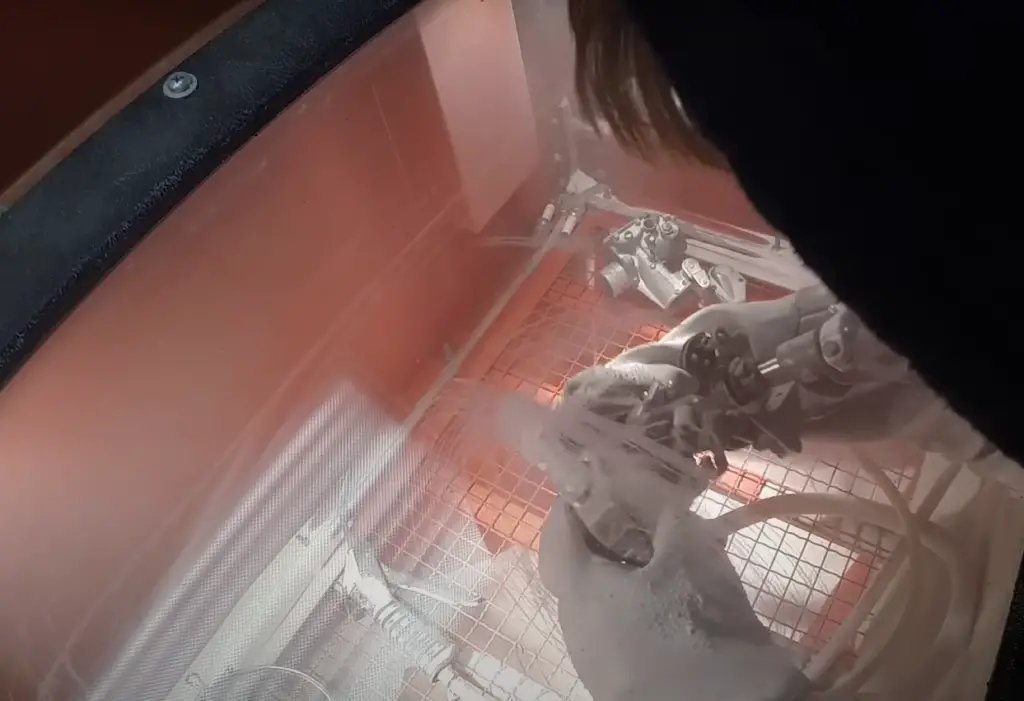
Additionally, never mix muriatic acid with other products such as ammonia or bleach as this can cause toxic gas. It is also vital to keep children and pets away from any area where you are working with muriatic acid.
Lastly, always dispose of any unused product according to local regulations. Never pour it down the drain or into nearby waterways as it can be hazardous for the environment. By taking these safety precautions, you can ensure that you are properly cleaning aluminum in a safe and responsible manner.
Easy Way on How to Clean Aluminum with Muriatic Acid
This acid represents a powerful and versatile cleaning agent that can be used to tackle many types of problems on aluminum surfaces. It is highly effective at removing rust, oxidation, and other contaminants from aluminum surfaces. It can also be used to remove tough stains caused by food, grease, dirt, and other materials. In addition to being an effective cleaning agent, muriatic acid also helps to protect the surface of the aluminum by creating a protective layer that reduces corrosion and damage from environmental elements. Follow these steps to successfully clean the aluminum surface:
- Wear protective clothing, gloves and goggles.
- Mix the muriatic acid in a plastic bucket with water, using one part acid to three parts of water or as instructed on the container.
- Apply the solution to your aluminum surface with a brush or sponge, making sure you don’t leave it in one place for too long as this can cause discoloration or etching of the metal.
- Use a clean rag to scrub the surface until all dirt and grime have been removed. Rinse off with plenty of cold water from a hose.
- Repeat if necessary: changing out the bucket when mixing more solution if needed.
- Rinse off the surface one more time with clear water and let it dry completely before touching or applying any sealant.
- Once your aluminum surface is clean and dry, you may apply a coat of sealer or wax for extra protection against corrosion. Make sure to apply the sealer in thin coats and let it dry completely before applying another coat.
- Store any remaining muriatic acid in a cool, dry place away from children or pets. Keep the container tightly sealed at all times when not in use to avoid accidents or spills.
- Dispose of muriatic acid properly according to local regulations. Do not pour it into the ground. Instead, take it to a hazardous waste disposal center for proper disposal. Wear gloves when disposing of both contaminated rags and solutions as they can cause skin irritation. [8]
FAQs
Does acid damage aluminum?
Yes, acid can damage aluminum. Acids like hydrochloric acid, nitric acid, and sulfuric acid can corrode aluminum if left on the surface for an extended period of time.
It is also important to note that some acids are stronger than others and may cause more damage in a shorter amount of time.
Can you use muriatic acid to clean aluminum before welding?
No, it is not recommended to do it before welding. Muriatic acid can react with aluminum and cause pitting or other damage that could weaken the metal. It is better to use a detergent solution or an abrasive material such as steel wool or sandpaper to clean the surface of aluminum before welding.
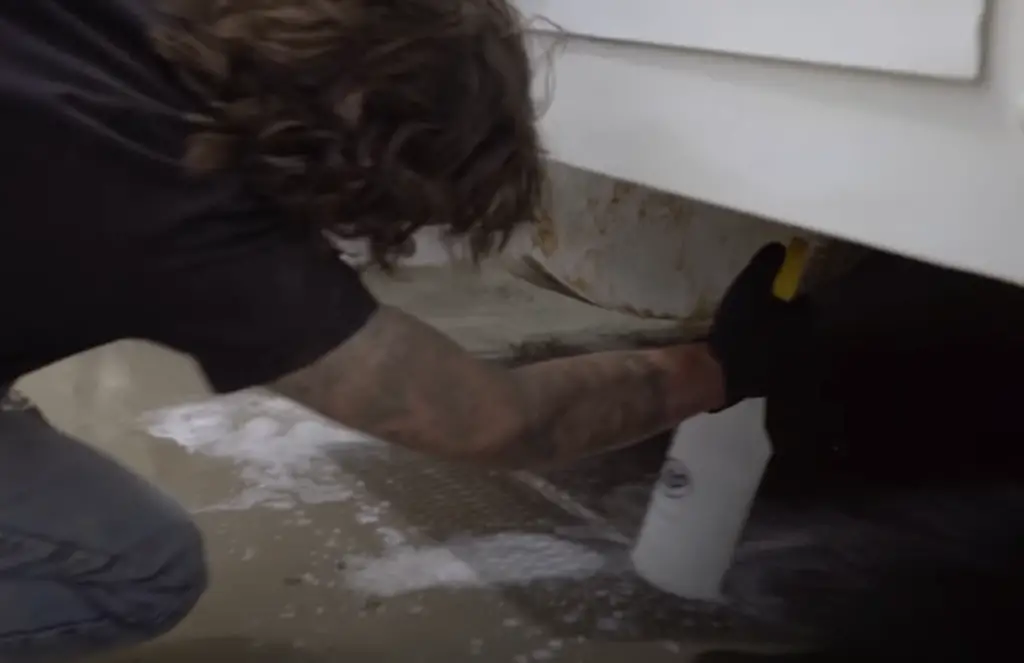
Be sure to rinse off any residue after cleaning and let the metal air dry completely before beginning your weld. Taking these extra precautions will help ensure a successful weld.
Will muriatic acid ruin aluminum?
It can cause damage to aluminum surfaces if it is not used properly. Muriatic acid is very corrosive and when left on an aluminum surface for too long, it can corrode the metal and damage its finish. If muriatic acid comes in contact with aluminum, it should be immediately washed off with plenty of water and a neutralizer like baking soda or vinegar applied to neutralize the acidity.
Can you use muriatic acid to clean aluminum rims?
It is not recommended. Muriatic acid is an extremely strong and corrosive solution of hydrochloric acid that can damage aluminum surfaces, leading to rust and other issues. It is also hazardous to handle, due to its high toxicity levels. Instead of using muriatic acid for cleaning aluminum rims, specialized cleaners or degreasers specifically designed for use on aluminum are recommended. These products are usually formulated with milder acids such as phosphoric or citric acid, which won’t cause the same wear-and-tear or corrosion as muriatic acid would. Furthermore, these solutions are typically safe and easy to handle. Additionally, you should use a soft nonabrasive brush when cleaning aluminum rims, as using a harsh or abrasive brush can cause scratches. After scrubbing the surface with a brush and an aluminum-specific cleaner, you should rinse it off thoroughly with water to remove any traces of the cleaner. Finally, dry the aluminum rim carefully with a clean cloth or towel to prevent any oxidation from occurring.
Useful Video: Learn how to clean your semi truck aluminum fuel tank fast- muriatic acid restoration!
Conclusion
Cleaning aluminum with muriatic acid is an effective way to restore the metal to its original shine and bring out its beautiful color. However, due to its powerful nature, all safety precautions should be taken before using it, such as wearing appropriate protective clothing and goggles. Always make sure to get the best grade of acids available. As far as methods of use, it is best to always dilute the acid with water and add a little bit of detergent or baking soda in order to reduce its strength. Above all, remember that being safe should always come first and don’t rush into any situation without ensuring that you are well prepared.
Now that you know all the information there is to know about using muriatic acid for cleaning aluminum, why not give it a try today? With some patience and hard work, your aluminum piece will soon shine brighter than ever before!
References:
- https://www.thespruce.com/how-to-use-muriatic-acid-2132784
- https://ignitecleaners.com/how-to-clean-aluminum/
- https://www.lovetoknow.com/home/cleaning/how-clean-aluminum
- https://rustconverters.net/muriatic-acid-aluminum/
- https://www.hunker.com/12482863/muriatic-acid-to-clean-aluminum
- https://www.hunker.com/13421393/what-kind-of-acid-is-used-to-clean-brighten-aluminum
- https://www.popularmechanics.com/home/a34285564/how-to-safely-use-muriatic-acid/
- https://rustconverters.net/muriatic-acid-aluminum/



